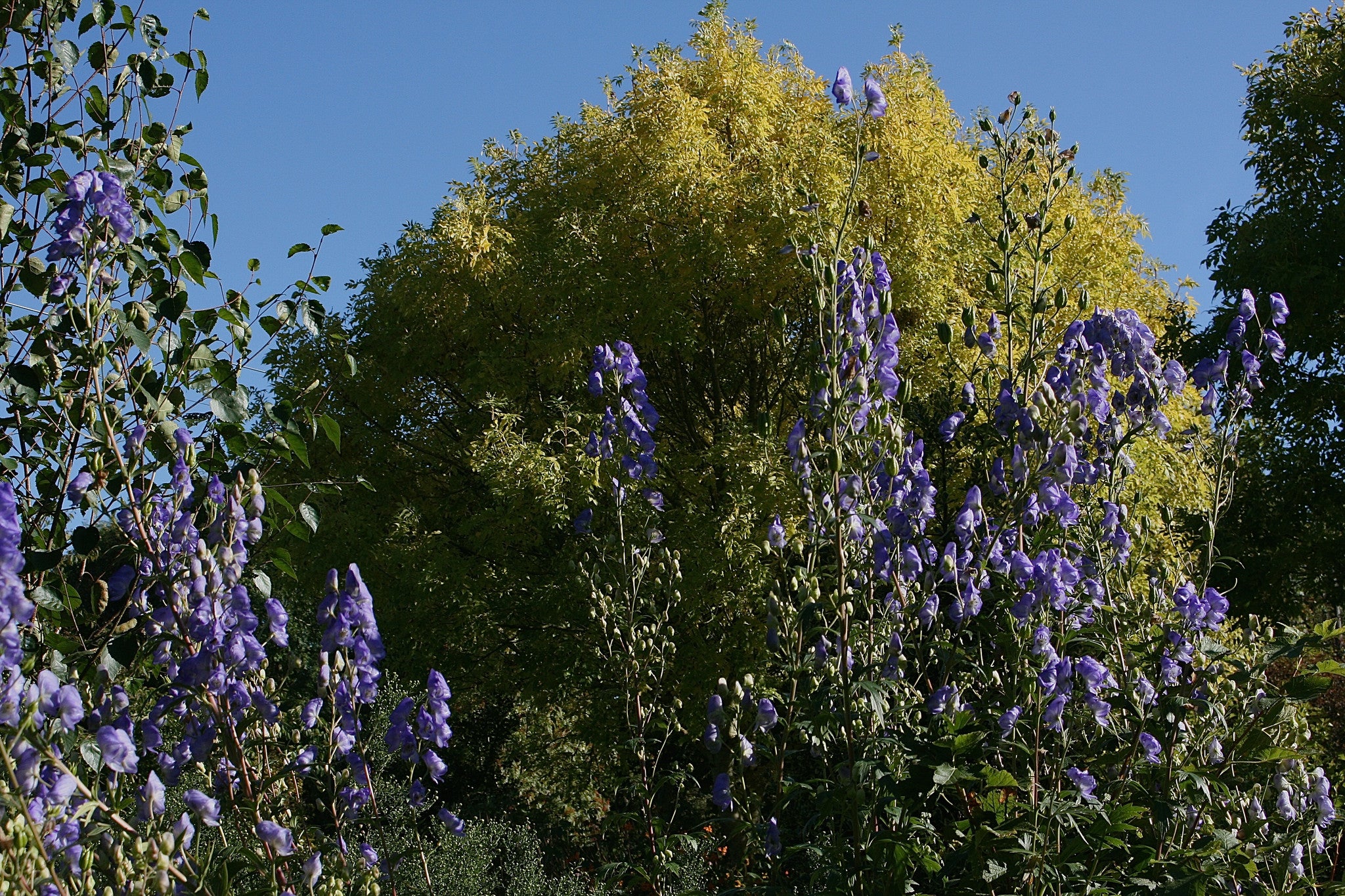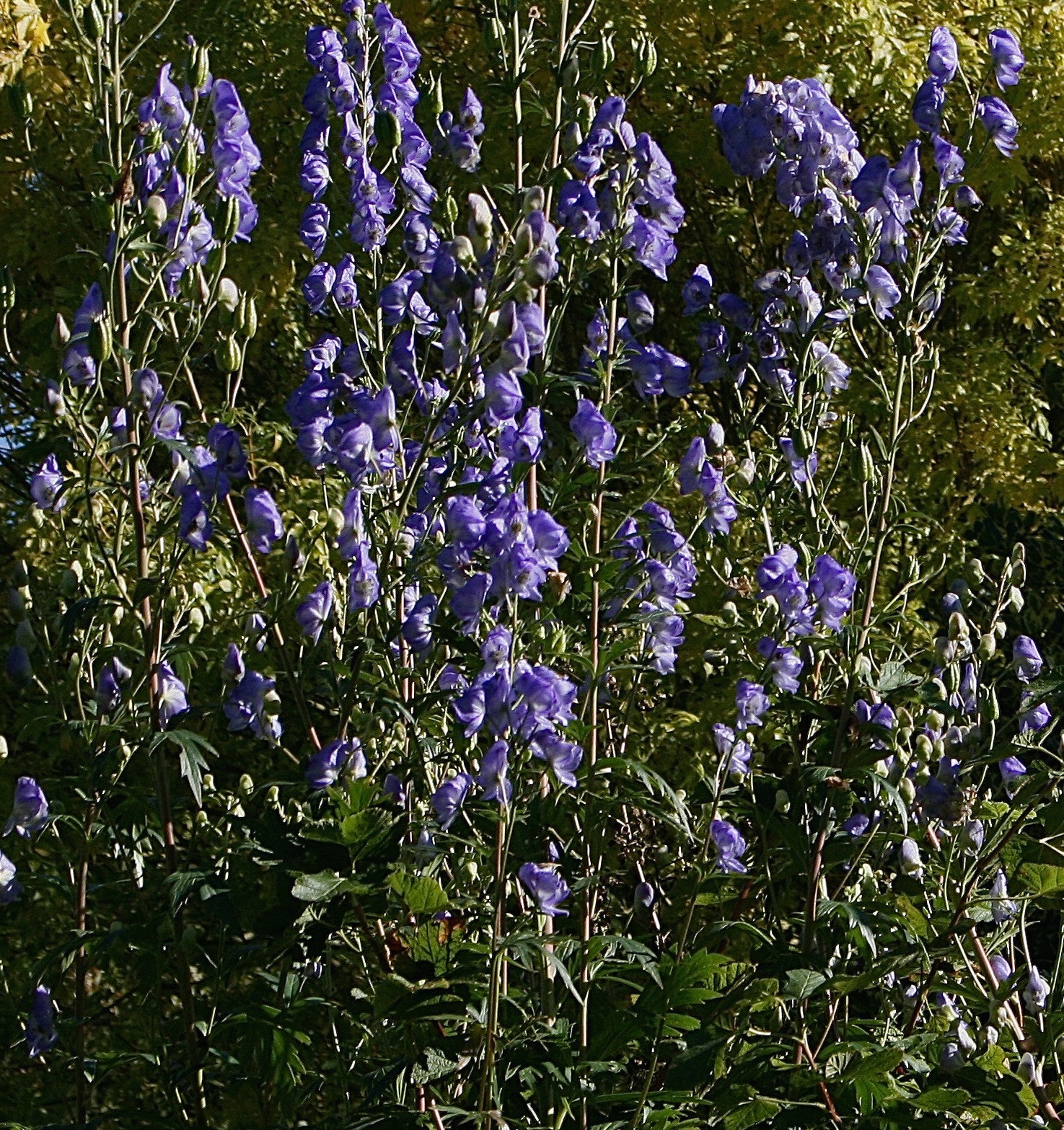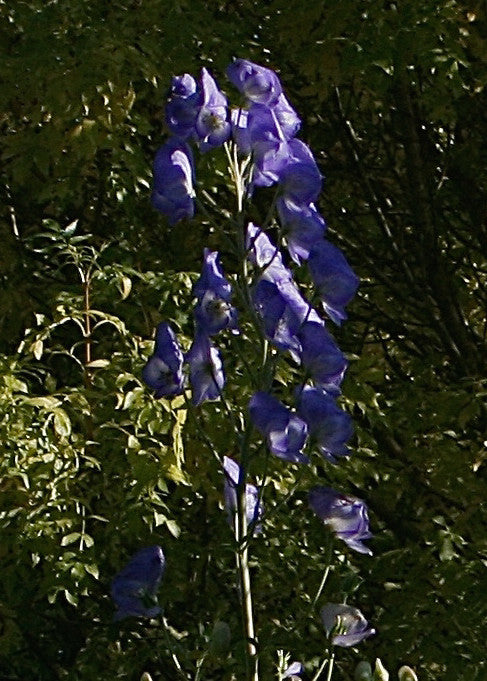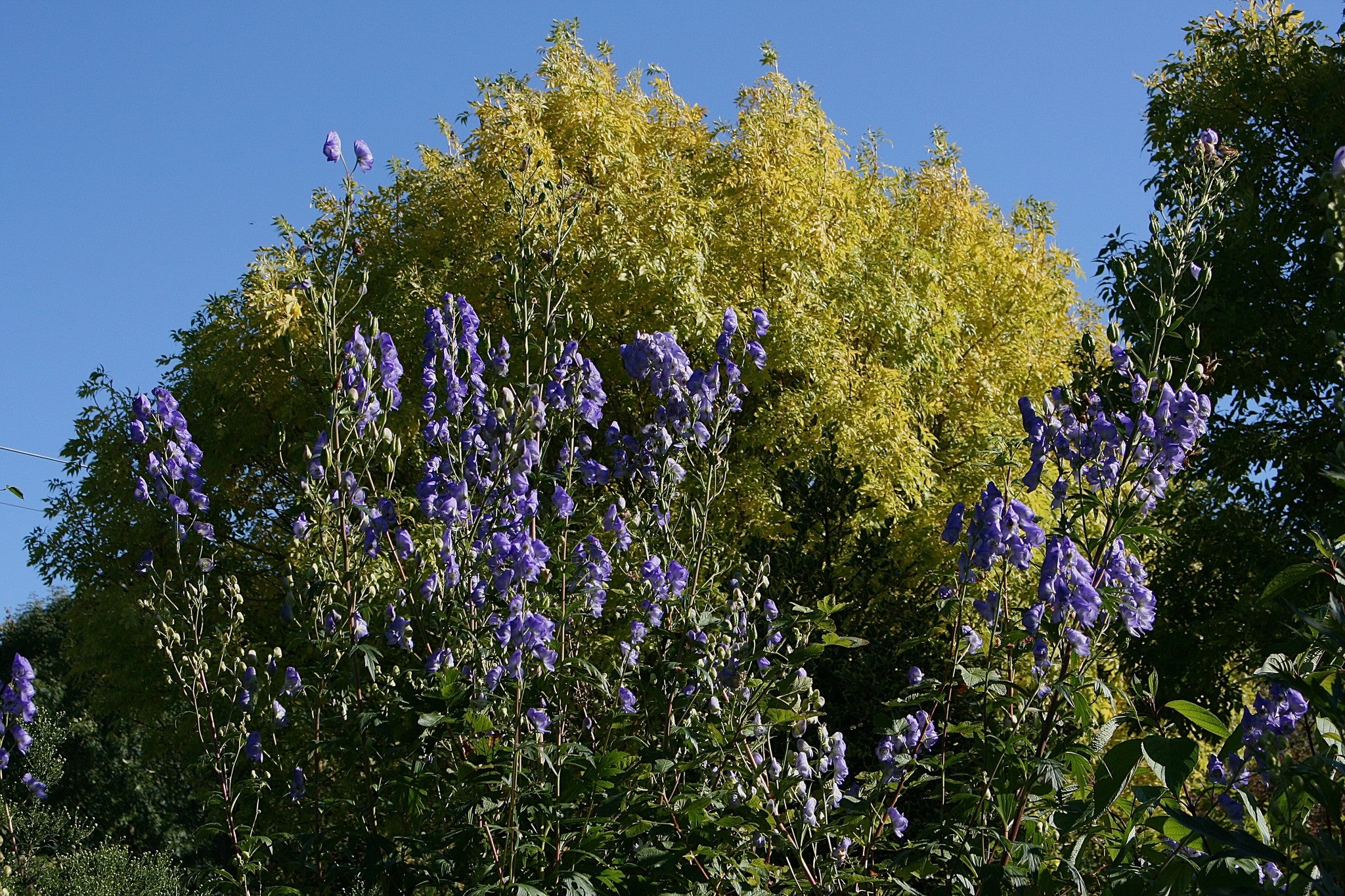Aconitum carmichaelii (Wilsonii Group) 'Spätlese'
£6.99
Unit price
/
Unavailable
Approx. 0.5 litre pot
About this cultivar:
Aconitum carmichaelii (Wilsonii Group) 'Spätlese' has clear pale blue flowers and is a slightly smaller form of Aconitum than usual.- although it looks huge in these photos...
- Position: Full sun, partial shade (better in partial shade)
- Soil: Almost any soil (that is not too dry) - grows well in Ballyrobert!
-
Flowers: July, August, September, October
- Other features: -
- Hardiness: H7 - Hardy in the severest European continental climates (< -20°C), Fully hardy - grows well in Ballyrobert!
- Habit: Columnar or Upright
- Foliage: Deciduous
- Height: 90 to 120 cm (3 - 4 ft)
- Spread: 60 to 90 cm (2 - 3 ft)
- Time to full growth: 2 to 5 years
- Plant type: Herbaceous Perennial
- Colour: Blue, green
- Goes well with: Cirsium rivulare 'Atropurpureum', Geranium 'Rozanne', most kinds of woodland plants - nice in partial shade under a tree, Monarda. Experiment with grasses!
About this genus:
Aconitum is an erect, tuberous-rooted perennial that features dense panicles of hooded flowers atop rigid, leafy stems. The upper sepal of each flower develops into a large, helmet-like structure that somewhat resembles the hood worn by medieval monks, hence the common names of monkshood and helmet flower. Leathery, dark green leaves are deeply divided into 3-5 lobes. All parts of the plant (especially the roots and seeds) are extremely poisonous - so watch out!Aconitum carmichaelii (which used to be known as Aconitum fischeri) is a species of monkshood sometimes called autumn-flowering monkshood because of its late summer to early autumn bloom. It blooms later than most other species of Aconitum. Aconitum napellus blooms mid-summer and is supposed to be native to Europe (but probably isn't since most Aconitum are found in Asia). The x cammarum cultivars of Aconitum have bi-colour flowers and also bloom in midsummer.
Most Aconitum prefer part shade. However you can try growing them in very shady areas or full sun as long as it is not too dry. They are often put near woodland type borders or perennial borders - however you can be bold and try them with some tall grasses!










